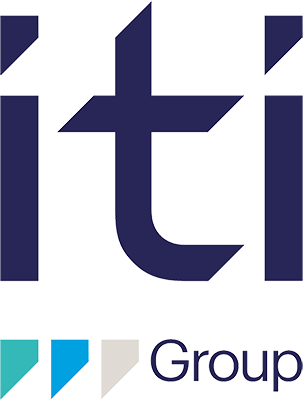Reducing Manufacturing waste – are you doing enough?

Are lean principles still the most efficient in reducing waste in manufacturing?
Well, in a sense they still are, but now with digital technologies added to the equation, leading manufacturers are taking ‘lean’ to new levels.
So, why change something that is already delivering good results? In short – don’t settle for good! Connecting lean methodologies with digital technologies can drive unimaginable success to your enterprise.
Let’s see how…
Let’s first explore what we mean by lean methodology, and what we mean by being efficient at reducing waste. Which digital technologies are worth your time and money?
LEAN METHODOLOGY
When you think about continuous improvement in the manufacturing industry, where systematic approaches are taken to identify and eliminate waste in processes, you’ve effectively defined the Lean methodology.
Lean provides a set of principles, with roots that date back to the 1930s, established by one of the leading Japanese automobile industries – Toyota Motor Corporation, with the aim of eliminating waste and attaining the best possible efficiency.
The Lean methodology includes five main principles:
- Defining the value
The value is defined by the customer’s perception of the worth of our product/service, “The value is everything that the customer is willing to pay for”. Here we need to take a step back, reflect and answer the questions: “Are we delivering what the customer needs? Are we delivering the value?”, and if the answer is negative or vague, we need to dive deeper to understand what our customers really need and how can we provide value for them.
- Value Stream mapping
We’ve defined the value, but how do we deliver it to the customer? Value stream mapping via visual tools helps us visualise the delivery path of value to the customer.
Value Stream mapping is a tool used by companies on their lean journey; a flow chart is used to document critical steps in the process.
- Flow creation
Once the value is defined and the delivery path mapped, we need to create a ‘flow’ (one of the key concepts in the lean world). The main goal here is to ensure a seamless process from the moment the customer places the order to the final delivery of goods. By creating a flow, we identify the bottlenecks in the process that should be managed to ensure smooth delivery. In manufacturing, usually, the bottleneck is considered to be the slowest-running machine in the process of producing goods.
- Pull System usage
After defining the workflow, we need to embrace the usage of the Pull System. The principle of the Pull System is to produce goods on demand, with the aim of avoiding overproduction, just in time.
- Chasing perfection
“Gentlemen, we are going to relentlessly chase perfection, knowing full well we will not catch it, because nothing is perfect. But we are going to relentlessly chase it, because in the process we will catch excellence. I am not remotely interested in just being good.” ~ Vince Lombardi
– Wise words which predated the introduction of Lean Methodology, but are nonetheless applicable in the lean world. The main focus of this 5th principle is to keep improvement continuous, observe the processes, listen to customers’ needs, and remove waste as much as possible.
By following these five lean principles, we create a framework that helps us in establishing and maintaining an efficient and effective organisation, helping key departments within the company to recognise inefficiencies and deliver the best value to customers.
With a lean mindset, companies are maintaining competency in the market, decreasing the cost of business as usual and increasing profits.
Now you may ask yourself a question, what is the connection between Industry 4.0 and Lean Manufacturing?
These two go hand in hand, but let’s first address the meaning of Industry 4.0.
INDUSTRY 4.0
What do we mean by Industry 4.0?
The 4th Industrial Revolution is happening at this very moment, as you are reading this article, involving smart technologies such as AI (Artificial Intelligence) and IoT (Internet of Things). Machines are becoming smarter every second, more connected, improving our lives, and work, and helping us make better decisions. The 4th Industrial Revolution is using new technology to improve all aspects of our lives.
When we couple up Industry 4.0 with Lean Methodology, we are joining two powerful approaches toward process and operations optimisation.
Lean Methodology has its focus set on reducing waste and efficiency improvement, while Industry 4.0 is leveraging advanced technologies for smart systems.
These two powerful approaches can be connected in multiple ways and here are just some of them:
- Process Optimization – identifying and eliminating inefficiencies in processes using sensors, data analytics, and real-time monitoring.
- Making decisions based on data – using data generated through Industry 4.0 devices to make informed decisions, optimise processes, and enhance performance.
- Continuous Improvement – real-time monitoring and feedback providing steady ground for quick implementation of improvements.
- Smart Automation – automation being applied only where necessary to avoid waste and overcomplication of processes.
- Quality Assurance/Control – Lean methodology is focused on delivering high-quality products and Industry 4.0 is providing real-time monitoring and predictive maintenance to ensure goods are delivered in accordance with or better than standard.
- Customisation & Flexibility – Lean Methodology ensures, that with Industry 4.0 customisation of processes and products, efficiency remains without increasing complexity and waste.
- Involvement of employees – “Clients will never love the company until employees love it first” and Lean Methodology holds in high regard employees’ input, whereas Industry 4.0 provide means for employees’ idea contribution to process improvements based on real-time data.
- Optimisation of Supply Chains – Lean Methodology applies to the full supply chain and Industry 4.0 provides visibility and traceability in the supply chain.
- Change Adoption – when combining the two, Lean Methodology and Industry 4.0, market shifts are approached with a great sense of agility.
- Cultural Alignment – the two create a company culture that embraces innovation, collaboration, and continuous improvement.
So, what is exactly Digital Lean?
DIGITAL LEAN
Digital Lean leverages the power of smart technologies to improve processes and maintain changes.
It merges intelligent methods of Lean reasoning towards the path of improvement of processes and production with smart technologies in the digital era.
Digital Lean brings many benefits to the play, such as faster work, less waste, improved quality, increased employee satisfaction, money and resources savings, swift solutions, flexibility in delivering change, growth, and continuous learning.
Digital Lean represents more than just a catchphrase in this new digital era. It represents a model of rationalised processes, increased quality, and strong adaptability.
Leading enterprises are now positioned to unleash not only cost savings and enhanced efficiency but also to expand in the areas of learning, company culture, and advancement.
Merging Lean Methodologies and Industry 4.0 redefines success in the age of digital manufacturing. Are you embracing the opportunities?
About ITI Consulting
ITI Consulting utilises our unique RAISE™ methodology to support clients to achieve their business goals with effective, appropriate digital solutions, realising maximum business value.
To learn more, visit ITI Consulting
Blog post by Sonja Rupar, Digital Transformation Analyst, ITI Consulting
